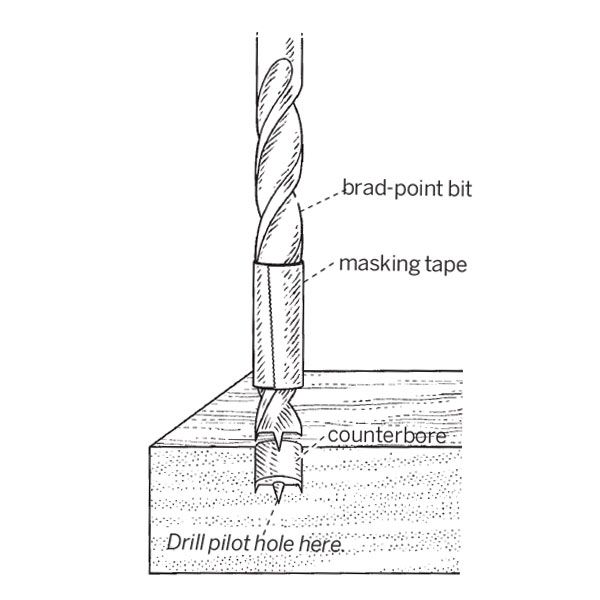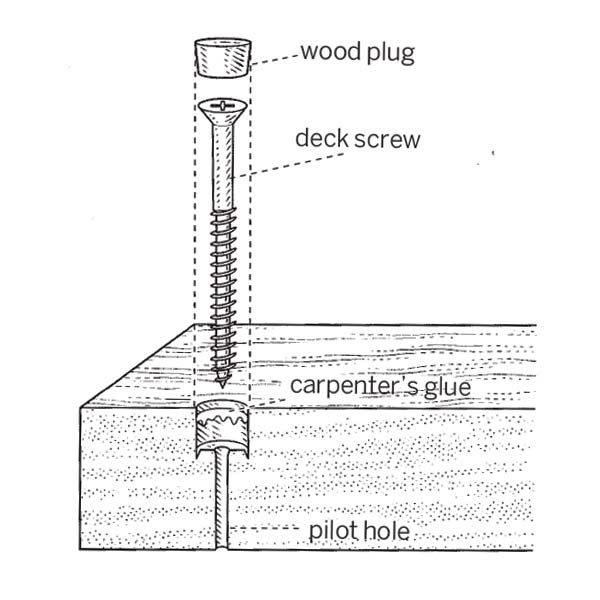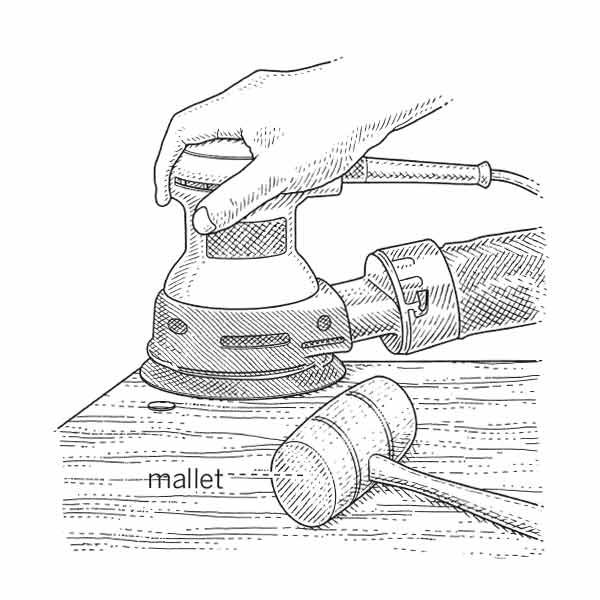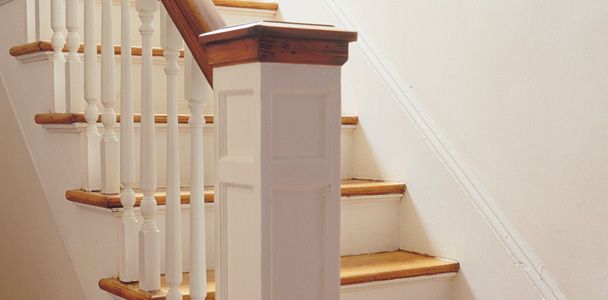 Drill/driver
Drill/driver Drill bit – brad point
Drill bit – brad point Drill bit – twist
Drill bit – twist Mallet
Mallet Random orbit sander
Random orbit sander
Q: I’d like to screw down the oak treads on a staircase I’m building, but I don’t want to see the screwheads. What’s the best way to hide them?
—William Mazzara, Milford, Mich.
A: I’d cover each one with a wood plug. You want plugs made of oak, to match the tread, with tapered sides and the grain running across the face. Each plug fits in a recess, known as a counterbore, drilled with a brad-point bit slightly larger than the diameter of the screwhead and slightly smaller than the plug’s widest end. The plugs’ packaging indicates which size bit to use. This is a job for flat-head deck screws; ordinary drywall screws aren’t strong enough.
Just follow these steps and no one but you will know there are screws in your staircase.
Step 1
Drill a Hole

A counterbore should be no deeper than half the tread’s thickness. So before you start, wrap some masking tape around the brad-point bit to act as a depth indicator.
After making the counterbore, drill a pilot hole for the screw using a separate twist bit the same diameter as the screw’s shank. Place the twist bit in the tapered hole made by the point of the brad-point bit; that way, the pilot hole will be exactly in the center of the counterbore.
Step 2
Drive in The Screw

Drive each screw tight to the bottom of its counterbore. Dab the sides of the counterbore with carpenter’s glue and insert the plug, positioned so that its face grain lines up with the tread’s. Tap the plug snugly into the counterbore with a mallet.
Step 3
Hide Your Work

Use a damp rag to wipe away any glue that squeezes out. When the glue dries, sand the plug flush and watch your handiwork disappear.






